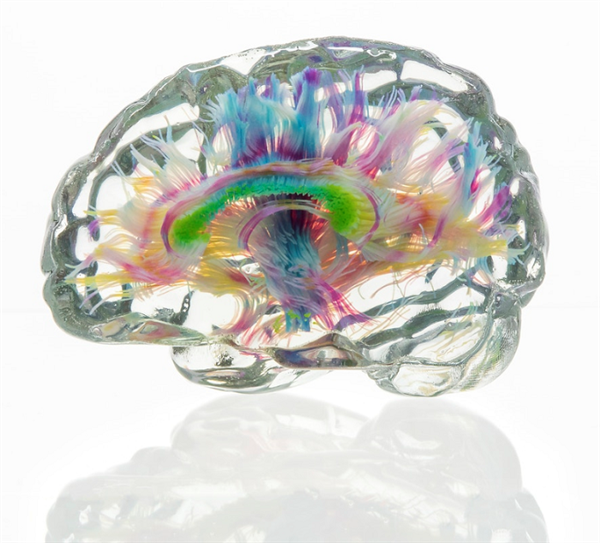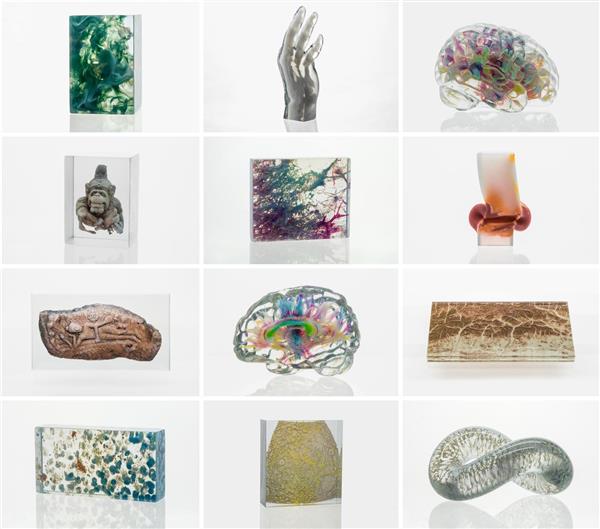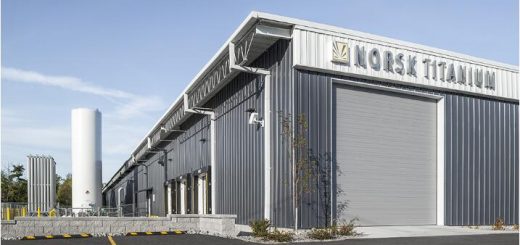Multimaterial Voxel-3D Printing Can Print Data Sets As Physical Objects
A team of researchers from the Wyss Institute at Harvard University and the MIT Media Lab has come up with a way to get 3D printers to print objects using physical manifestations of data sets rather than geometric representations.

White matter tractography data physicalization of the human brain, visualizing bundles of axons, which connect different regions of the brain. Photo: The Mediated Matter Group
Current 3D printing methods have strong limitations when applied to complex or highly diverse data sets. To print an object, calculations are made regarding a digital description of an object, converting the numeric description to geometric shapes that can be used to print an object.
The team at MIT has developed a technique that uses actual data describing an object to print the desired object. In their paper published on the open access site Science Advances, they present an approach to physical data visualization through voxel printing using multimaterial 3D printing to improve the current data physicalization workflows.
Multimaterial 3D printing with photopolymeric materials enables the simultaneous use of several different materials, and by utilizing dedicated cyan, magenta, yellow, black, white, and transparent resins, full-color models with variable transparency can be created. The ability to create objects with and inside transparent material enables the physical visualization of compact n-manifolds such as unconnected point cloud data, lines and curves, open surfaces, and volumetric data.
Multimaterial 3D printers operate by depositing droplets of several UV-curable resins in a layer-by-layer inkjet-like printing process to construct high-resolution 3D objects. High levels of spatial control in manufacturing can be achieved by generating a set of layers in a raster file format at the native resolution of the printer, where each pixel defines the material identity of a droplet and its placement in 3D space. The set of layers can be combined into a voxel matrix. A printer can then process these droplet deposition descriptions given as a voxel matrix to digitally fabricate heterogeneous and continuously varying material composites. This approach is often described as bitmap-based printing or voxel printing.

Compilation of a variety of 3D printed physicalizations
Commercially available multimaterial 3D printers can have a build envelope of 500 mm by 400 mm by 200 mm with a droplet deposition resolution of 600dpi and 300dpi, respectively, and a layer separation of down to 12μm, which results in 929 billion individually addressable material droplet positions, or voxels, through the approach described above.
The researchers note that their technique can also be used to create new objects from scratch on a 3D modeling computer and then print them. To demonstrate, they designed some interesting objects such as a very intricate mask with subtle color changes, and 3D printed it—and in so doing, gave birth to an entirely new art form.
According to Christoph Bader, a research assistant in the Mediated Matter research group, the method has potential application in a wide variety of fields including conservation and preservation of cultural artifacts, presurgical planning and education.
Resource:3ders.org




Recent Comments